#walter hampden
Explore tagged Tumblr posts
Text
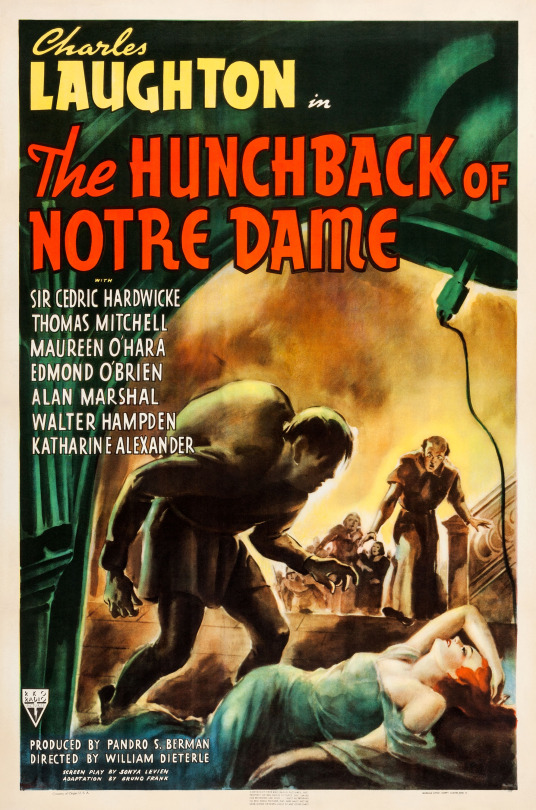
#The Hunchback of Notre Dame#Charles Laughton#Sir Cedric Hardwicke#Thomas Mitchell#Maureen O'Hara#Edmond O'Brien#Alan Marshal#Walter Hampden#Katharine Alexander#William Dieterle#1939
2 notes
·
View notes
Text
Episode 403 - Lee Bowman (Part 2)
We bid goodbye to Lee Bowman with his first and last appearances on Suspense. He co-stars with Walter Hampden and Susan Hayward in "The Dead Sleep Lightly" (originally aired on CBS on March 30, 1943) - the story of a man who places a call to a grave and hears the voice of the dead on the other end of the line. Then, Bowman is a man whose fiancee disappears off the face of the earth - or does she? - in "I Won't Take a Minute" (originally aired on CBS on December 6, 1945). Finally, Bowman plays one of America's most famous detectives in "The Pinkerton Man" from The Cavalcade of America (originally aired on NBC on November 18, 1946).
Check out this episode!
1 note
·
View note
Text

Walter Hampden on the cover of Time in 1929, while he was the producer, director, star and theatre manager of a Broadway revival of Cyrano de Bergerac.
0 notes
Text
2023 Boston Red Sox Roster
Pitchers
#22 Garrett Whitlock (Lilburn, Georgia)
#25 Josh Winckowski (Toledo, Ohio)
#28 Corey Kluber (Coppell, Texas)*
#35 Richard Bleier (Plantation, Florida)*
#37 Nick Pivetta (Saanich, British Columbia)
#40 Gregory Mills (Spokane, Washington)
#41 Chris Sale (Lakeland, Florida)
#46 John Schreiber (Rockwood, Michigan)
#50 Kutter Crawford (Okeechobee, Florida)
#55 Chris Martin (Arlington, Texas)*
#57 Joely Rodríguez (Santo Domingo, Dominican Republic)*
#61 Kaleb Ort (Lowell, Michigan)
#65 James Paxton (Ladner, British Columbia)*
#66 Brayan Bello (Santa Bárbara de Samaná, Dominican Republic)
#72 Chris Murphy (Los Angeles, California)**
#74 Kenley Jansen (Willemstad, Curaçao)*
#75 Brandon Walter (New Castle, Delaware)**
#76 Zach Kelly (Botetourt County, Virginia)
#78 Joe Jacques (Shrewsbury, New Jersey)**
#83 Brennan Bernardino (Valencia, California)*
#89 Tanner Houck (Collinsville, Illinois)
Catchers
#3 Reese McGuire (Covington, Washington)
#12 Connor Wong (Pearland, Texas)
#38 Jorge Alfaro (Sincelejo, Colombia)*
Infielders
#2 Justin Turner (Lakewood, California)*
#5 Enrique Hernández; Jr. (San Juan, Puerto Rico)
#10 Trevor Story (Irving, Texas)
#11 Rafael Devers (Cotuí, Dominican Republic)
#19 Pablo Reyes (Santo Domingo, Dominican Republic)*
#20 Chang Yu-Cheng (Taitung Chéngshì, Taiwan)
#36 Triston Casas (Plantation, Florida)
#39 Christian Arroyo (Brooksville, Florida)
#43 Raúl Mondesí; Jr. (San Cristóbal, Dominican Republic)*
Outfielders
#7 Yoshida Masataka (Fukui Machi, Japan)**
#16 Jarren Duran (Cypress, California)
#18 Adam Duvall (Louisville, Kentucky)*
#30 Rob Refsnyder (Laguna Hills, California)
#99 Alex Verdugo (Tucson, Arizona)
Coaches
Manager Alex Cora (Ciudad Caguas, Puerto Rico)
Bench coach Ramón Vázquez (Ciudad Cidra, Puerto Rico)
Hitting coach Peter Fatse (Hampden, Massachusetts)
Assistant hitting coach Luis Ortiz (Santo Domingo, Dominican Republic)
Assistant hitting coach Ben Rosenthal (Phoenix, Arizona)
Pitching coach Dave Bush (Tredyffrin Township, Pennsylvania)
Bullpen coach Kevin Walker (Grand Prairie, Texas)
Bullpen catcher Charlie Madden (Atlanta, Georgia)
Bullpen catcher Mani Martinez (San Pedro De Macoris, Dominican Republic)
Catching/game planning coach Jason Varitek (Altamonte Springs, Florida)
1B/outfield coach Kyle Hudson (Mattoon, Illinois)
3B coach Carlos Febles (El Seibo, Dominican Republic)
Field coordinator Andy Fox (Sacramento, California)
#Sports#Baseball#MLB#Boston Red Sox#Celebrities#Dominican Republic#Florida#Canada#British Columbia#Delaware#New Jersey#Texas#Ohio#Curacao#Illinois#Michigan#Georgia#Virginia#Washington#Colombia#Taiwan#Puerto Rico#Kentucky#Arizona#Japan#Pennsylvania#Massachusetts#Awesome
1 note
·
View note
Photo
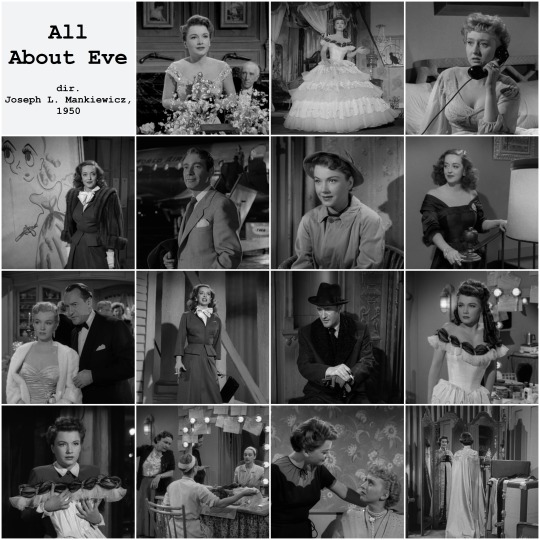
All About Eve
directed by Joseph L. Mankiewicz, 1950
#All About Eve#Joseph L. Mankiewicz#movie mosaics#Anne Baxter#Walter Hampden#Bette Davis#Celeste Holm#Gary Merrill#Marilyn Monroe#George Sanders#Thelma Ritter#Barbara Bates#Margo Channing#Eve Harrington
12 notes
·
View notes
Text
A SUCCESSFUL CALAMITY
1940

A Successful Calamity is a two-act comedy by Clare Kummer first produced in 1917.
Clare Beecher Kummer (1873-1958) was the great niece of American writer Harriet Beecher Stowe (Uncle Tom’s Cabin). In addition to being a playwright (mostly of comedies), Kummer also wrote music and lyrics for the theatre. Perhaps her most successful play was Her Master’s Voice (1933), which was filmed in 1936 and was twice made for television.
The entire play takes place in the Wilton home in New York. In it, a wealthy industrialist (Henry Wilton) tests the loyalty of his spoiled children and selfish wife by pretending to be broke.

The original production opened on Broadway at the Booth Theatre on February 5, 1917. Produced by Arthur Hopkins, the cast featured William Gillette (Kummer’s cousin) as Henry Wilton and Estelle Winwood, as Emma Wilton. It ran 144 performances. The play took the summer off and returned on October 10, 1917, this time at the Plymouth Theatre (now the Gerald Schoenfeld).
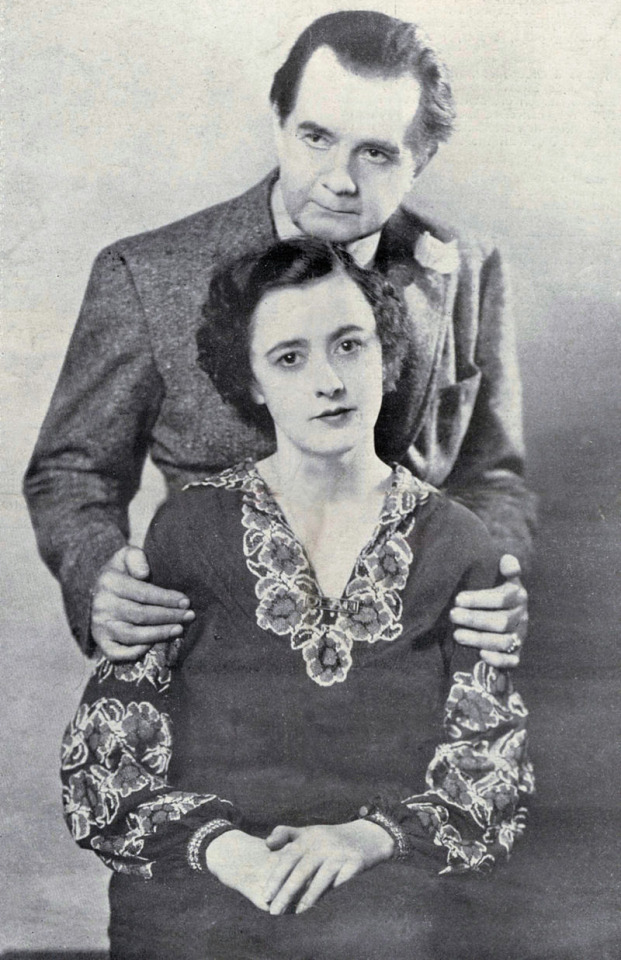
In February 1934 there was a revival at the Cherry Lane Theatre (now considered off-Broadway) starring Paul Gilmore as Henry and his real-life daughter Virginia Gilmore as Emily, Mr. Wilton’s daughter. In addition to owning and managing the Cherry Lane Theatre, Mr. Gilmore also produced and directed the production.

A new production of A Successful Calamity opened in Atlantic City at the Garden Pier Theatre on July 29, 1940. It starred Walter Hampden, dubbed ‘the first gentleman of the stage’. By 1940, the Garden Pier Theatre was one of the last legit venues in Atlantic City to be programming live theatre, albeit only in the summertime. Instead of new plays, the Garden Pier presented established Broadway hits with name stars aimed at vacationers.

This was Hampden’s Atlantic City debut.
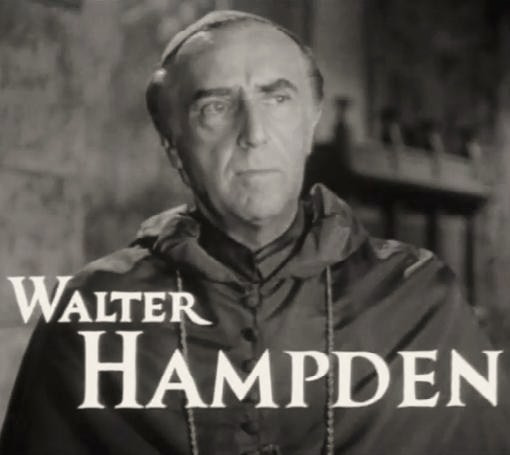
Walter Hampden (1870-1955) was a classically-trained actor who had played Hamlet three times on Broadway. In 1925 he took over management of a vaudeville house on Upper Broadway, and renamed it Hampden's Theatre. Hampden was president of the Players' Club for 27 years. He was nominated for a Primetime Emmy Award in 1952.

The production was supposed to kick off in Mount Kisco NY on July 15, 1940, but postponed due to Hampden’s film work in Hollywood. Instead, it began on July 23rd at the New Brighton Theatre in Brighton Beach, NY.
“What was sharp and up-to-the-minute in '17 seems to need a shot in the arm in 1940. Little comedies like this should trot along briskly but last night, particularly in the first act, the cast frequently seemed to be dragging it along by the halter.” ~ ROBERT FRANCIS, BROOKLYN DAILY EAGLE
Hampden’s supporting cast included: Mildred Baker, Alexander Campbell, Arthur Tell, Norman Stuart, Robert Kerr, Henry Mawbray, Harry Neville, Arden Young, Tamara Choate, and Florence Young. David Leonard directed the production.
In November, Hamden and the production launched an extensive tour of the Southern States starting in Hagerstown MD. During the tour, Hamden was also appearing on movie screens in Cecil B. DeMille’s North West Mounted Police, alongside Gary Cooper and Lon Chaney Jr.
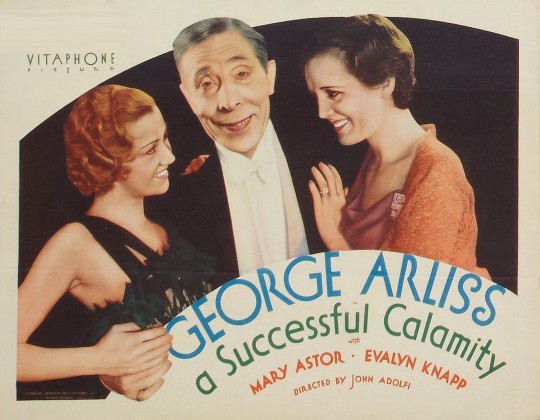
In 1932 a feature film adaptation was released starring George Arliss and Mary Astor.
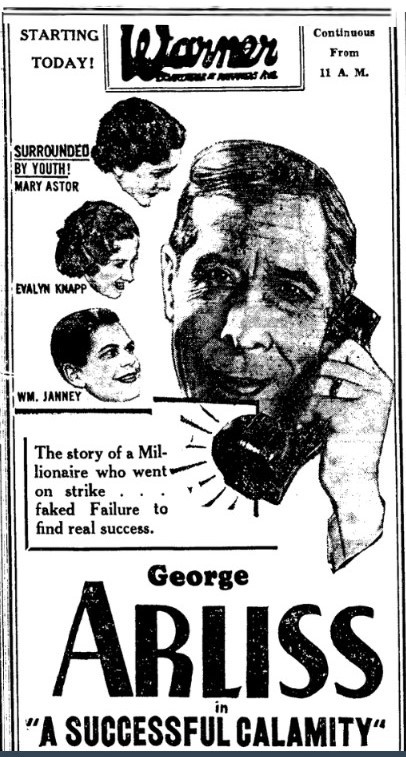
The film opened in Atlantic City at the Warner Theatre on the Boardwalk on September 17, 1932.
#A successful scandal#Clare Kummer#1940#Walter Hampden#Atlantic City#Garden Pier Theatre#Broadway#Broadway Play#Cherry Lane Theatre#Paul Gilmore#William Gillette#George Arliss#Mary Astor#Harriet Beecher Stowe#Estelle Winwood#Theatre#Stage#Play
3 notes
·
View notes
Photo


#humphrey bogart#walter hampden#william holden#sabrina#1954#**myedits:gif**#**humphreybogart#**walterhampden#**williamholden#**sabrina#gif warning
297 notes
·
View notes
Photo

#Sabrina#Billy Wilder#Audrey Hepburn#Humphrey Bogart#William Holden#Walter Hampden#John Williams#Martha Hyer#Joan Vohs#Marcel Dalio
34 notes
·
View notes
Photo

365 Day Movie Challenge (2019) - #79: The Hunchback of Notre Dame (1939) - dir. William Dieterle
I’m in an Edmond O’Brien phase right now, as I mentioned in my recent reviews of White Heat and A Girl, a Guy, and a Gob, and since the latter film made me realize that there was more to O’Brien’s résumé than just the noir archetypes he personified in the 1940s and 50s, I ventured forth into both the later and earlier stages of his career. First, I watched the 1966 TV production The Doomsday Flight, an absorbing disaster movie written by Rod Serling that plays like Airport meets Speed (a decent copy is available for free on YouTube). O’Brien chews the scenery expertly, portraying a bespectacled bomber with both a subdued, almost elegant menace and, in the third act, an increasing mania. It’s some of the best work I’ve seen from Edmond O’Brien, and it provided an interesting counterbalance to the totally different performance I watched the next night: poet and philosopher Pierre Gringoire in RKO’s 1939 version of The Hunchback of Notre Dame.
As is probably true of everything Victor Hugo wrote, Notre Dame is not exactly a barrel of laughs. Of course, this adaptation made noticeable changes to the source material to fit the demands of Hollywood’s Production Code, resulting in a film far less grim than it might have been, and even in the two-hour running time there were various elements from the novel that were compressed or completely removed, but the aura of tragedy remains. Charles Laughton’s embodiment of Quasimodo, the deformed man who is confined to the bell tower in the Notre-Dame de Paris cathedral, is magnificently rendered in its expression of humanity. The average moviegoer in 1939 may have reacted like so many of the Parisians in the film, either cowering in terror or jeering cruelly, but Laughton shows us that Quasimodo’s disability does not make him a monster. He is a misunderstood, lonely soul who does not fully comprehend the behaviors and laws of the world outside his home.
Although the cast is stuffed with so many actors that many of them do not get adequate time to develop their characters, there are several performers who are able to make their mark. Cedric Hardwicke is perhaps my favorite among them, portraying Paris’s villainous Chief Justice Frollo with a remarkably controlled intensity, his passions always bubbling beneath the surface and threatening to boil over. Meanwhile, Maureen O’Hara and Edmond O’Brien fare quite well in their American film debuts. Prior to arriving in Hollywood, O’Hara had already appeared in a handful of British films, including Alfred Hitchcock’s Jamaica Inn (1939) with Charles Laughton; O’Brien was a New Yorker and a classically trained Shakespearean actor, having had successes on Broadway and with Orson Welles’s Mercury Theatre group. (After Notre Dame, O’Brien returned to New York to star opposite Ruth Chatterton in the John Van Druten play Leave Her to Heaven, followed immediately by the part of Mercutio in the Laurence Olivier-Vivien Leigh production of Romeo and Juliet.) I loved watching these two young actors, still new - or brand new, in O’Brien’s case - to the art of acting for the camera, already totally at ease with this style of performance. O’Hara and O’Brien bring immense warmth, not to mention physical beauty, to their roles as Esmeralda, the persecuted gypsy woman, and Pierre Gringoire, idealistic scholar.
The presence of Thomas Mitchell, Walter Hampden, Harry Davenport, Etienne Girardot, Arthur Hohl (sporting a sweet wig) and George Tobias are additionally welcome sights, regardless of their screen time. Under the direction of William Dieterle, the epic scale of the crowd scenes and the huge sets designed and decorated by Van Nest Polglase (one of all-time favorite names ever) and Darrell Silvera are tributes to their creative skill. Moreover, certain moments in Joseph H. August‘s black-and-white cinematography incorporate shadow and light in ways that recall Dieterle’s acting/directing connections to German Expressionist cinema in films like Waxworks (1924) and Sex in Chains (1928). Many flaws are obvious in this take on The Hunchback of Notre Dame, like the casting of Maureen O’Hara as a Romani character, but given the era when it was produced, it is undeniable that Dieterle and RKO put considerable effort into making the drama a memorable viewing experience.
#365 day movie challenge 2019#the hunchback of notre dame#1939#1930s#30s#william dieterle#old hollywood#victor hugo#rko#rko radio pictures#edmond o'brien#charles laughton#cedric hardwicke#sir cedric hardwicke#maureen o'hara#thomas mitchell#walter hampden#harry davenport#etienne girardot#arthur hohl#george tobias#van nest polglase#darrell silvera#joseph h. august#period piece#period pieces
2 notes
·
View notes
Text
They Died With Their Boots On 1941

#they died with their boots on#errol flynn#olivia de havilland#arthur kennedy#anthony quinn#gene lockhart#charley grapewin#jim thorpe#ray teal#stanley ridges#john litel#walter hampden#sydney greenstreet#regis toomey#hattie mcdaniel#frank wilcox#joe sawyer#eddie acuff#minor watson#roy barcroft#lane chandler#tex cooper#clancy cooper#frank ferguson#francis ford#chick hannan#raymond hairy chin#michael grey eagle#alvin elk nation#amos elk nation
9 notes
·
View notes
Text

#All This and Heaven Too#Bette Davis#Charles Boyer#Barbara O'Neil#Jeffrey Lynn#Virginia Weidler#Henry Daniell#Walter Hampden#George Coulouris#Anatole Litvak#1940
1 note
·
View note
Text
. . . at o n e . We both say: ART shall be the new RELIGION and e v e r y ARTIST a PRIEST . . .


.
.
.
.
.
.
.
.
.
.
In 1912 · shortly after meeting actor Walter Hampden in Rochester ·
Bragdon wrote that their ideas were “at one. We both say Art shall be the new religion and every artist a priest.”
Bragdon’s maiden voyage in theatre design was Hampden’s 1919 production of HAMLET · “The greatest play in the English language · in the biggest city of the country by the ‘finest Hamlet of a generation’ “.
Bragdon’s work received excellent reviews as “one of the happiest experiments of the new and suggestive treatments of stage decorations in contrast to the older fashioned and realistic setting” ·
.
.
.
1 note
·
View note
Link

#the hunchback of notre dame#william dieterle#sonya levien#charles laughton#maureen o'hara#cedric hardwicke#remake#the hunchback#based on#novel#victor hugo#drama#romance#united states#thomas mitchell#edmond o'brien#alan marshal#walter hampden#horror#horror film#horror films#horror movie#horror movies#horror fan#horror fans#horror review#horror reviews#horror reviewer#film review#film reviews
0 notes
Photo

- Do you mind if we turn this off? - Why? - Because. - Don't you like it? - I used to like it. - Certain songs bring back certain memories to me, too. Did you love her? - I'd rather not talk about it. - I'm sorry. It's so strange to think of you being touched by a woman. I always thought you walked alone. - No man walks alone from choice.
Sabrina, Billy Wilder (1954)
#Billy Wilder#Samuel A. Taylor#Ernest Lehman#Humphrey Bogart#Audrey Hepburn#William Holden#Walter Hampden#John Williams#Martha Hyer#Joan Vohs#Marcel Dalio#Marcel Hillaire#Nella Walker#Francis X. Bushman#Ellen Corby#Charles Lang#Arthur P. Schmidt#1954
2 notes
·
View notes
Photo

Walter Hampden photographed by James Abbe, c.1923
9 notes
·
View notes
Photo

Sabrina
directed by Billy Wilder, 1954
#Sabrina#Sabrina Fair#La Vie en Rose#Billy Wilder#movie mosaics#Audrey Hepburn#Humphrey Bogart#Martha Hyer#William Holden#Marcel Hillaire#Walter Hampden
9 notes
·
View notes